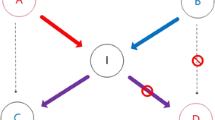Abstract
In this paper, we propose a novel rate adaptive optimization scheme for streaming media transmission over wireless heterogeneous IP networks. In the proposed adaptive scheme, through the analysis of the packet loss characteristics in wireless channel, we develop the relationship between the packet loss rates and the packet sizes. Furthermore, the scheme detects the nature of packet losses by sending large and small packets alternately, and then adopts an adaptive rate optimization strategy to decrease the network congestion and increase the network throughput. Using congestion discrimination and updating factor, the scheme can adapt to the changes of network states quickly and improve delivery quality of wireless multimedia streaming. Simulation results show that, in comparisons to the existing rate optimization algorithms, our proposed scheme offers significantly improved performance in terms of throughput and network congestion, especially when the channel quality is poor in different network topology environments.
Similar content being viewed by others
References
Wang N.-C., Chen J.-S., Huang Y.-F., Chiou C.-L. (2008) Performance enhancement of TCP in dynamic bandwidth wired and wireless networks. Wireless Personal Communications 47(3): 399–415
Lee H. J., Byun H. J., Lim J. T. (2008) TCP-friendly congestion control for streaming real-time applications over wireless networks. IET Communications 2(1): 159–163
Wang T.-C., Fang H.-C., Chen L.-G. (2002) Low-delay and error-robust wireless video transmission for video communications. IEEE Transactions on Circuits and Systems for Video Technology 12(12): 1049–1058
Lahanas A. et al (2002) Improving TCP performance over networks with wireless components using ‘probing devices’. International Journal of Communication Systems 15: 495–511
Tobe, Y., Tamura, Y., Molano, A., Ghosh, S., & Tokuda, H. (2000). Achieving moderate fairness for UDP flows by path-status classification. In Proceedings of the 25th annual IEEE conference local computer networks (LCN 2000), pp. 252–261, Tampa, FL.
Cen S. et al (2003) End-to-end differentiation of congestion and wireless losses. IEEE/ACM Transactions on Networking 115: 703–717
Biaz S., Vaidya N. (2005) De-randomizing congestion losses to improve TCP performance over wired-wireless networks. IEEE/ACM Transactions on Networking 13(3): 596–608
Park, M. K., Sihn, K.-H., & Jeong, J. H. (2006). A statistical method of packet loss type discrimination in wired-wireless networks. In Proceedings of the IEEE CCNC, pp. 458–462.
Ha J., Park E.-C., Park K.-J., Choi C.-H. (2009) A cross-layer dual queue approach for improving TCP fairness in infrastructure WLANs. Wireless Personal Communications 51(3): 499–516
Lee C. L. et al (2002) On the use of loss history for performance improvement of TCP over wireless networks. IEICE Transactions on Communications E85-B(11): 2457–2467
Floyd, S., et al. (1996) Router mechanisms to support end-to-end congestion control. LBL Technical Report, URL ftp://ftp.ee.lbl.gov/papers/collapse.ps.
Eckhardt, D., et al. (1998). Improving wireless LAN performance via adaptive local error control. In Proceedings of the 6th IEEE international conference on network protocols.
Zhao H., Dong Y., Zhang H., Li Y. (2011) A cross-layer routing scheme using adaptive retransmission strategy for wireless mesh networks. Wireless Personal Communications 63(2): 345–361
Li, Y., & Guan, Y. L. (2000). Modified Jakes model for simulating multiple uncorrelated fading waveforms. In Proceedings IEEE ICC (Vol. 1, pp. 46–49).
Zhao, H.-T., Dong, Y., & Li, Y. (2010). An end-to-end loss discrimination scheme for multimedia transmission over wireless IP networks. In Adhoc networks, LNICST 28, pp. 718–728.
Network Simulator 2 (NS-2). http://www.isi.edu/nsnam/ns.
Choi B.-Y., Song S., Wang Y., Park Eun K. (2009) Using RTT variability for adaptive cross-layer approach to multimedia delivery in heterogeneous networks. IEEE Transactions on Multimedia 11(6): 1194–1203
Dong, Y., & Chen, M. (2007). Real time video transmission control in wireless-wired IP networks. In Proceedings of the IEEE wireless communications and networking conference, pp. 3687–3691 (WCNC2007), Hong Kong.
Author information
Authors and Affiliations
Corresponding author
Additional information
This work was supported in part by National Natural Science Foundation of China (No.60972038, No.61001077, and No. 61101105), the Natural Science Foundation of the Higher Education Institutions of Jiangsu Province (No.10KJB510013), and the Scientific Research Foundation for Nanjing University of Posts and Telecommunications (No. NY211006 and No. NY211007).
Rights and permissions
About this article
Cite this article
Zhao, H., Li, D., Liu, N. et al. Adaptive Rate Optimal Design for Wireless Heterogeneous Networks: Jointly Congestion Discrimination and Queue Updating. Wireless Pers Commun 70, 1321–1338 (2013). https://doi.org/10.1007/s11277-012-0749-5
Published:
Issue Date:
DOI: https://doi.org/10.1007/s11277-012-0749-5




